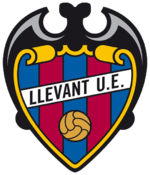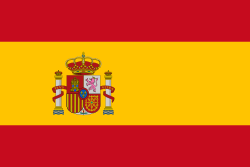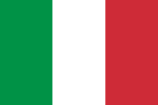Levante UD
 |
||||
| Full name | Levante Unión Deportiva, S.A.D. | |||
|---|---|---|---|---|
| Nickname(s) | Granotes | |||
| Founded | 1909 (as Levante Fútbol Club) |
|||
| Ground | Ciutat de València, Valencia, Spain (Capacity: 25,534) |
|||
| Chairman | Quico Catalán | |||
| Manager | Luis García Plaza | |||
| League | La Liga | |||
| 2009-10 | Segunda Division, 3rd (promoted) | |||
|
||||
Levante Unión Deportiva, S.A.D. (Spanish), also known as Llevant Unió Esportiva (Valencian), is a Spanish football club based in Valencia.
The club was originally formed in 1909 as Levante FC, taking their name from the beach "Levante" in La Malvarrosa. Their local rivals Valencia CF were not formed until 1919. They adopted their current name in 1942 following a merger with Gimnástico FC. During the early 1980s Johan Cruyff briefly played for the club. Currently, the Levante U.D. plays in the Spanish First Division.
Contents |
History
Early years
Levante UD was originally formed in 1909 and was one of the pioneering football clubs in Valencia. However, another club, Cabanyal FC had been playing since 1903. The club’s earliest games were played at La Platjeta, near the docks on a plot of land owned by a perfume entrepreneur. Their next ground was also near the port area and the club gradually began to become associated with the working class. In 1919 they played Valencia CF for the first time and lost 1-0. The game marked the inauguration of the recently formed club’s new ground at Algirós. In 1928 Levante FC won their first trophy, the Valencian Championship.
1909 saw the formation of Gimnástico FC. They originally played at the Patronato de la Juventud Obrera and started out as Universitario FC. By 1920, they had become Real Gimnástico CF after they were granted royal patronage by Alfonso XIII. In 1920, they also reached the final of the Campeonato de Valencia but the game was never played. In 1930, with the emergence of the Second Spanish Republic they dropped the Real from their name.
In 1934 both Levante FC and Gimnástico CF made their debut in the second level, when the division was expanded from ten teams to twenty-four. In 1935, Levante FC won the Campeonato Levante-Sur, a competition that featured teams from Valencia, Murcia and Andalusia, and subsequently reached the semi-finals of the Spanish Cup. In the early rounds they beat Valencia CF and FC Barcelona, before losing to the eventual runners-up, CE Sabadell FC.
Copa de la España Libre
During the Spanish Civil War both Levante FC and Gimnástico CF played in the Mediterranean League, finishing fifth and sixth respectively. Teams from this league also competed in the Copa de la España Libre (Free Spain Cup). It was originally intended that the top four teams from the league would enter the cup, but FC Barcelona opted to tour Mexico and the United States. As a result, Levante FC took their place. The first round of the competition was a mini-league with the top two teams, Levante FC and Valencia CF, then qualifying for the final. On July 18 1937, Levante FC beat their city rivals 1-0 at the Montjuïc.
The merger
During the civil war the Levante FC ground was destroyed but their squad remained intact. In contrast Gimnástico CF had a ground, Campo de Vallejo, but had lost most of their players. As a result, the two clubs merged in 1939 to become Unión Deportiva Levante-Gimnástico. In 1941 they adopted the current name Levante Unión Deportiva. The clubs colours also date from this era. The azulgrana home colours were originally the colours of Gimnástico CF. They have also used a black and white away kit, the original Levante FC colours.
La Liga
The club had to wait until the 1960s to make their La Liga debut. In 1963 they finished as runners-up in Segunda División Group 2, then beating Deportivo de La Coruña 4-2 on aggregate in a promotion play-off. During their first top flight season, they managed to win both games against city rivals Valencia, managing a 5-1 home win against Barcelona in 1964-65. However, they survived just two seasons in the first division, being relegated upon losing a playoff to CD Málaga. After winning the 2003-04's second division, the side returned to La Liga but survived only one season. After finishing third in Segunda in 2005-06 they returned, managing to survive for 2007-08 after a 4-2 home win over Valencia, courtesy of Riga Mustapha (two), Salva and Laurent Courtois.
The team's financial status worsened, however, and there were reports that the players had only received approximately one fifth of their contractual payments. News reports stated that the team had incurred a debt of over €18 million in payments due their players. The team plummeted down the standings, and it was confirmed that they would be playing in the second level for 2008-09, with several matches to go. The players protested at their lack of payments, at one point, refusing to move for several seconds after the opening whistle against Deportivo, and later announcing that they would issue a job action during the season ending game against Real Madrid.
The action was resolved when league officials announced that a benefit game would be played between Levante team members, and a team made up of players from the first division, with all monies recovered going to pay the back wages due the players. [1]
On 13th June 2010, Levante UD returned to La Liga after a 3-1 win over already relegated CD Castellón.
Current squad
As of July 17, 2010[1]
Note: Flags indicate national team as has been defined under FIFA eligibility rules. Players may hold more than one non-FIFA nationality.
|
|
Out on loan
Note: Flags indicate national team as has been defined under FIFA eligibility rules. Players may hold more than one non-FIFA nationality.
|
Stadium
"Estadio Ciutat de Valencia" was opened on September 9, 1969, with capacity for 25 354 spectators. Dimensions 107x69 meters. Other stadiums or fields where the team has played: The Platgeta, Great track, Algirós, La Cruz, El Patronato, Campo de la Soledad, Turia River Stadium, Campo de Vallejo. Antonio Román and Nou Stadium are the previous names of the current Ciutat de Valencia stadium. The quarry is currently developing its role in Buñol Sports City, but it should be noted that the quarry played for years in the Malvarrosa, leaving left field. Currently, the club management and administration are agreeing to new guidelines for a new stadium.
Seasons
Recent history
-
Season Pos. Pl. W D L GS GA P Cup Europe Notes 2004/05 1D 18 38 9 10 19 39 58 37 Relegated 2005/06 2D 3 42 20 14 8 53 39 74 1st Round Promoted 2006/07 1D 15 38 10 12 16 37 53 42 Last 16 2007/08 1D 20 37 7 5 25 31 70 26 Last 16 Relegated 2008/09 2D 8 42 18 10 14 59 59 64
Season to season
|
|
- As Levante UD
|
|
|
|
Levante FC
- 2 seasons in the Segunda División
- 5 season in the Tercera División
Gimnástico FC
- 2 season in the Segunda División
- 5 season in the Tercera División
Levante FC + Gimnástico FC: Levante UD
- 6 seasons in the Primera División
- 35 season in the Segunda División
- 12 seasons in the Segunda División B
- 16 seasons in the Tercera División
- 1 season in the Categorías Regionales
Honours
- Copa del Rey: 1937
- Second Division: 2003-04
- Segunda División Group 2: Runners-Up 1962-63
- Second Division B: 1988-89, 1995-96, 1998-99
- Third Division: 1943-44, 1972-73
- Campeonato Levante-Sur: 1934-35
- Campeonato de Valencia: 1927-28
- Trofeo Ciudad de Valencia: 1996
Notable former players
|
|
|
see also Category:Levante UD footballers
Famous coaches
 Josep Escolà (19xx-xx)
Josep Escolà (19xx-xx) Enrique Orizaola (1964–65)
Enrique Orizaola (1964–65) Juande Ramos (1994–95)
Juande Ramos (1994–95) Mané (1996–97), (2005–06)
Mané (1996–97), (2005–06) Manuel Preciado (2003–04)
Manuel Preciado (2003–04) Bernd Schuster (2004–05)
Bernd Schuster (2004–05) Juan Ramón López Caro (2006–07)
Juan Ramón López Caro (2006–07) Abel Resino (2007)
Abel Resino (2007) Gianni De Biasi (2007–08)
Gianni De Biasi (2007–08)
see also Category:Levante UD managers
References
- ↑ Levante squad 2010-11 (Spanish)
External links
- Official website (Spanish) (Catalan)
- Regional Titles at RSSSF
- Copa de España Libre, at RSSSF
- Levante U.D. Forum
|
|||||||||||||||||
|
||||||||